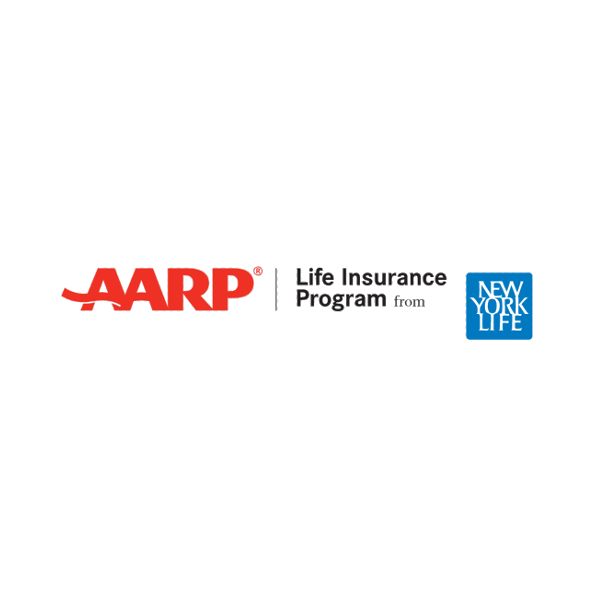Home insurance in Texas is more than just a financial safety net it’s an essential part of protecting your investment and ensuring your financial well-being. Given Texas’s susceptibility to natural disasters such as hurricanes, hailstorms, and tornadoes, finding the best home insurance in Texas is crucial. This guide will help you navigate the complexities of homeowners insurance, ensuring you select the best policy to meet your needs.
Toc
Understanding Texas Homeowners Insurance

Understanding the nuances of homeowners insurance is vital for Texas homeowners. The state’s diverse climate and geographic features present unique risks, making it essential to have a solid homeowners insurance policy to protect against unexpected events.
Key Coverage Areas in Texas
- Dwelling Coverage (Coverage A): This coverage protects the physical structure of your home, including the roof, walls, and attached structures, against covered perils such as fire, wind, and hail. In Texas, where severe weather is frequent, robust dwelling coverage is essential. It’s important to understand that dwelling coverage is typically based on the replacement cost of the home, which means the cost to rebuild it to current standards, rather than its market value. For instance, a homeowner in Austin might have a dwelling coverage limit of $500,000, while a homeowner in a rural area may have a limit of $250,000. Some homeowners may choose actual cash value coverage to lower their premiums, but this means they will receive less in the event of a claim, necessitating a careful consideration of the trade-off between lower premiums and potentially insufficient coverage.
- Personal Property Coverage (Coverage C): This coverage replaces or repairs personal belongings, including furniture, electronics, and clothing, in the event of a covered loss. Texas homeowners, known for their love of their homes and their prized possessions, require robust personal property coverage to protect their belongings.
- Liability Coverage (Coverage E): This provides protection if someone is injured on your property or if you are held legally responsible for damaging someone else’s property. Given the unpredictable nature of life, this coverage can save you from significant financial loss.
- Additional Living Expenses (Coverage D): If your home becomes uninhabitable due to a covered event, this coverage can help pay for increased living costs, such as hotel stays and restaurant meals, while your home is being repaired. This is particularly important in Texas, where severe weather can cause extensive damage.
- Medical Payments (Coverage F): This coverage can help pay for medical expenses if a guest is injured on your property, regardless of fault. This type of coverage can prevent a minor accident from turning into a financial nightmare.
Understanding Coverage Limits and Deductibles
Evaluating coverage limits is crucial for homeowners. Homeowners should carefully assess their coverage limits to ensure they are sufficient to rebuild their homes in the event of a total loss. Understanding deductibles is equally important, as they affect out-of-pocket costs during a claim. Higher deductibles typically lower premiums but may lead to significant expenses during a claim.
Homeowners Insurance: A Necessity in Texas
While homeowners insurance is not legally required in Texas, if you have a mortgage, your lender will likely require you to maintain a homeowners insurance policy. Even homeowners without a mortgage are strongly encouraged to purchase insurance to protect their investments and financial well-being. The risk of natural disasters like hurricanes, tornadoes, and hailstorms makes adequate coverage essential for Texas homeowners.
The Role of the Texas Windstorm Insurance Association (TWIA)
For homeowners in coastal areas, the Texas Windstorm Insurance Association (TWIA) provides coverage for windstorm damage where private insurers are hesitant to offer policies. Homeowners in regions like Galveston or Corpus Christi often need to purchase windstorm coverage through TWIA, which may have different rates and coverage limitations compared to private insurers. While TWIA is a vital resource, its rates can be higher than those of private insurers, and its coverage may be more limited. Homeowners need to weigh these factors carefully when choosing their coverage.
Common Causes of Homeowners Claims in Texas
Texas is known for its unpredictable and sometimes severe weather patterns, leading to various homeowners insurance claims. Some of the most common causes of claims include:
- Wind and Hail Damage: The high frequency of thunderstorms, hurricanes, and tornadoes in Texas can cause significant damage to roofs, windows, and siding. Homeowners must be prepared for the potential of severe weather that can wreak havoc on their properties.
- Flood Damage: Certain regions of Texas are prone to flooding, particularly during heavy rainfall or coastal storms. Standard homeowners policies typically do not cover flood damage, making separate flood insurance a necessity for many homeowners. Before purchasing a policy, carefully assess your property’s flood risk and consider whether additional flood insurance is necessary.
- Fire and Lightning Strikes: Texas’s hot and dry climate, combined with the risk of wildfires, means that homeowners must be prepared for potential fire and lightning-related damage. Ensuring your policy covers these risks is essential for peace of mind.
- Water Damage: Burst pipes, leaking appliances, and other water-related issues can cause substantial damage to a home’s structure and personal belongings. Understanding your coverage specifics regarding water damage is crucial for homeowners.
While severe weather is a major factor in Texas homeowners claims, other factors like aging infrastructure and inadequate maintenance can also contribute to claims. For example, a burst pipe in an older home due to frozen pipes during a winter storm could result in a claim that wasn’t directly caused by severe weather.
Factors Affecting Home Insurance Rates in Texas

Several factors can influence the premiums you pay for homeowners insurance in Texas. Knowing these factors can help you make informed decisions and potentially secure lower rates.
Geographic Location
Your home’s location within Texas significantly impacts your insurance rates. Homes in areas prone to natural disasters, such as coastal regions or areas with a history of severe storms, typically have higher premiums. Conversely, homes in more inland or low-risk areas may enjoy lower rates. For example, homeowners in Houston may face higher rates due to hurricane risks, while those in Dallas may experience lower premiums.
Property Features and Risk Factors
The age, size, and condition of your home, as well as any unique features or potential risk factors, can also impact your insurance costs. Older homes, homes with pools or trampolines, or those in high crime areas may face higher premiums. For instance, if your home has a swimming pool, you may be considered a higher risk, leading to increased insurance costs.
Bài viết liên quan 01:
1. https://azgad.vn/archive/1269/
2. https://azgad.vn/archive/1271/
3. https://azgad.vn/archive/1266/
Personal Risk Profile
Your personal characteristics, such as your credit score, claims history, and marital status, can influence the rates you’re offered. Maintaining a good credit score and minimizing previous insurance claims can help you secure more favorable premiums. Insurance companies often view individuals with better credit as lower risk, translating to lower rates.
The Importance of Home Maintenance
Regular home maintenance can also affect your insurance rates. Well-maintained homes with updated systems (like plumbing and electrical) may qualify for lower premiums. Regular inspections and timely repairs can protect your investment and potentially save you money on insurance.
Finding the Best Home Insurance in Texas

When it comes to protecting your Texas home, working with a reputable and reliable insurance provider is essential. Here are some of the top home insurance companies in Texas that offer the best homeowners insurance in Texas:
Leading Providers in Texas
- State Farm: A well-established national brand, State Farm is known for its comprehensive coverage options and excellent customer service. With a strong presence in Texas, they offer tailored policies that cater to the unique needs of Texas homeowners.
- Allstate: Allstate offers a wide range of home insurance products, including coverage for specialty items and unique risk factors. Their user-friendly online tools make it easy for homeowners to customize their policies.
- USAA: While only available to military members and their families, USAA is widely regarded as one of the best home insurance providers in Texas. They offer competitive rates and exceptional customer service, making them a top choice for eligible homeowners.
- Chubb: For high-value homes and luxury properties, Chubb’s tailored coverage solutions and personalized risk management services make it a top choice. They are known for their high coverage limits and exceptional claims service.
- Nationwide: Nationwide’s flexible home insurance policies and discounts make it a popular option for Texas homeowners seeking affordable coverage. Their commitment to customer satisfaction has earned them a loyal following.
Comparing Quotes and Coverage
To find the best home insurance policy for your needs, it’s essential to compare quotes from multiple providers. Utilize online comparison tools and work directly with insurance agents to ensure you’re getting the most comprehensive coverage at the most competitive rates. Don’t hesitate to ask for clarification on policy details and coverage limits to make an informed decision.
Discounts and Bundling Options
Texas home insurance providers often offer a variety of discounts to help lower your premiums. These can include discounts for safety features, loyalty, and bundling your home and auto insurance policies. Be sure to ask about all available discounts to maximize your savings. For instance, installing a security system or smoke detectors may qualify you for additional discounts. Additionally, consider looking for the best home and auto insurance in Texas to further enhance your savings.
Additional Coverage Options for Texas Homeowners

While standard homeowners insurance provides a solid foundation of protection, there are additional coverage options that Texas homeowners may want to consider.
Flood Insurance
Given the state’s vulnerability to flooding, a separate flood insurance policy is often a wise investment. Flood coverage is not typically included in standard homeowners policies, so it’s essential to explore this additional protection, especially if you live in a high-risk area. The National Flood Insurance Program (NFIP) can provide coverage options for homeowners in flood-prone regions.
Windstorm and Hail Coverage
In Texas, where severe storms are common, windstorm and hail coverage can provide an extra layer of protection for your home. This coverage may be required or recommended, depending on your location within the state. Homeowners in coastal areas should pay particular attention to this coverage, as hurricanes can cause extensive damage.
Personal Article Floaters
For high-value items such as jewelry, art, or antiques, personal article floaters can offer broader protection and higher coverage limits than a standard homeowners policy. This additional coverage can provide peace of mind for homeowners with valuable possessions.
Umbrella Insurance
Consider adding an umbrella insurance policy for even greater liability protection. This type of coverage extends beyond the limits of your homeowners insurance, providing additional liability coverage in the event of a significant claim. It’s particularly beneficial for homeowners with considerable assets to protect.
Frequently Asked Questions (FQAs)

Bài viết liên quan 02:
1. https://azgad.vn/archive/1266/
2. https://azgad.vn/archive/1269/
3. https://azgad.vn/archive/1271/
Q: What is the average cost of homeowners insurance in Texas?
A: The average cost of homeowners insurance in Texas is higher than the national average, typically around $2,554 per year. However, the actual cost can vary significantly based on factors like your location, home value, and coverage options.
Q: What are the most common exclusions in Texas homeowners insurance policies?
A: Common exclusions in Texas homeowners insurance policies include damage caused by floods, earthquakes, and acts of war. It’s important to review your policy carefully and consider purchasing additional coverage like flood insurance if needed.
Q: How can I lower my homeowners insurance premiums in Texas?
A: You can lower your homeowners insurance premiums in Texas by taking advantage of available discounts, such as those for safety features, loyalty, and bundling your home and auto policies. Maintaining a good credit score and minimizing claims can also help you secure more favorable rates.
Q: Should I consider additional coverage options?
A: Yes, it’s wise to evaluate additional coverage options like flood insurance and personal article floaters, especially if you own high-value items or live in a flood-prone area. Assessing your unique risks can help you determine what additional coverage may be necessary.
Q: What steps should I take to find the best home insurance in Texas?
A: Start by evaluating your specific needs, researching top providers, and comparing quotes. Consider factors like coverage options, customer service, and available discounts. Working with an insurance agent can also help you navigate the complexities of finding the best policy.
Conclusion
Protecting your Texas home with the right homeowners insurance coverage is essential. By understanding the key coverage areas, evaluating the factors that influence rates, and comparing top insurance providers, you can find the best home insurance in Texas to safeguard your most valuable investment.
Remember, the unique risks and weather patterns in Texas make comprehensive coverage a necessity. Take the time to review your options, explore additional coverage solutions, and work with a trusted insurance professional to ensure your home and belongings are fully protected. With the right homeowners insurance in place, you can enjoy the beauty and vibrant culture of the Lone Star State with peace of mind. Don’t wait until disaster strikes—start your search for the best homeowners insurance in Texas today!










